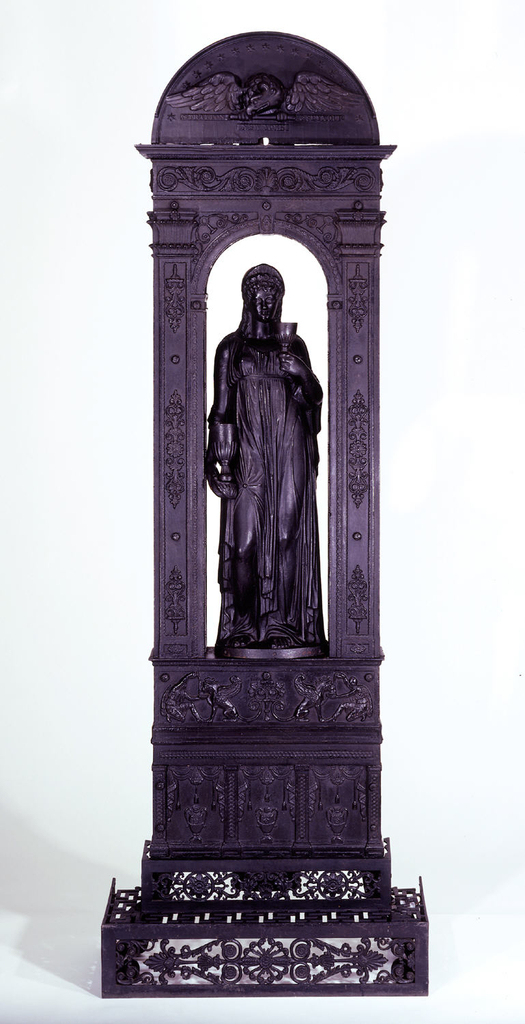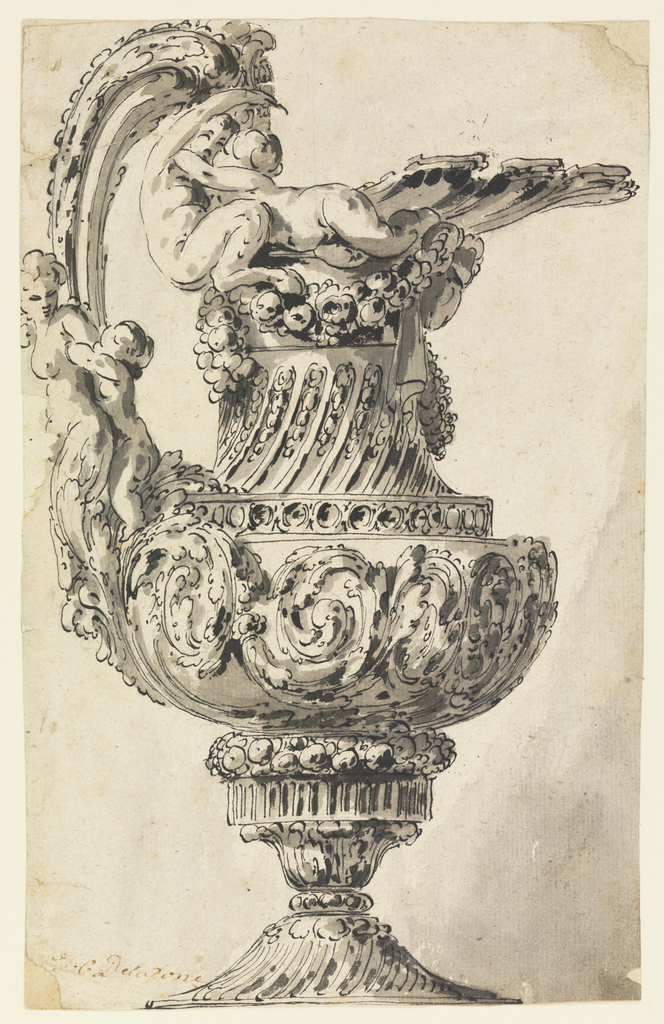The whole idea that a radiator could be as large or as decorative as this one seems extraordinary to most twenty-first century viewers. However, if one thinks about it, Joris Laarman created the Heatwave radiator in 2007, formed of rococo-like scrolls in a newer medium, poly-concrete, to decorate a wall. To correctly appreciate the context...
This is a design for an ewer by the Parisian architect, designer, decorator and print maker, Jean-Charles Delafosse (1734-91). Delafosse engaged in diverse artistic productions producing urban planning proposals, architectural plans, furniture designs as well as drawings of ruin capriccios and allegorical and ornamental prints. His designs were widely circulated across France, England, and Germany...
Piranesi’s originality lay in his eclecticism. Pulling together influences from Egyptian, Etruscan, Ancient Roman, and Greek designs, Piranesi presented a hybrid design system that was rooted in his commitment to the stature and importance of the Roman design heritage. From this starting point, the architectural elements move from historical recreations to articulated fantasy. While his...

